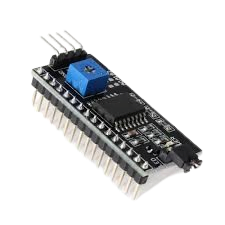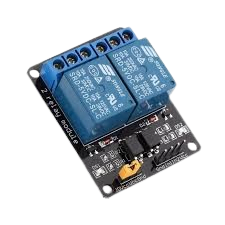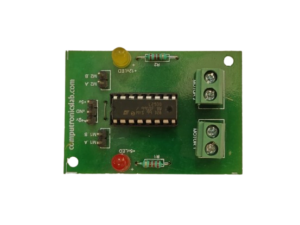I2C Module
Overview
The I2C (Inter-Integrated Circuit) Module is a crucial component in modern electronics, designed to simplify communication between microcontrollers and peripheral devices. The I2C communication protocol is a two-wire, serial interface that allows multiple slave devices to communicate with a single master device, making it ideal for connecting sensors, displays, and other peripherals to microcontrollers like Arduino, Raspberry Pi, and others. The I2C Module is widely used in embedded systems due to its simplicity, efficiency, and scalability.
Features
- Two-Wire Interface: The I2C Module uses just two wires for communication: SDA (Serial Data) and SCL (Serial Clock). This minimal wiring requirement reduces the complexity of connections and allows for easy integration of multiple devices on a single bus.
- Addressable Devices: Each device connected to the I2C bus is assigned a unique address, allowing the master device to communicate with specific slaves individually. This addressability is key to managing multiple peripherals on the same bus without interference.
- Bidirectional Communication: The I2C protocol supports bidirectional communication, meaning data can be transmitted both from the master to the slave and from the slave to the master. This flexibility is essential for reading sensor data, writing to displays, or configuring devices.
- Clock Synchronization: The SCL line carries the clock signal that synchronizes the data transmission between devices. The master device controls the clock, ensuring that all devices on the bus operate in sync, which is crucial for reliable communication.
- Multiple Devices on a Single Bus: One of the major advantages of the I2C Module is its ability to connect multiple devices on the same bus. The module can support up to 128 devices, depending on the implementation, making it ideal for complex systems with numerous peripherals.
- Low Power Consumption: The I2C Module is designed to be energy-efficient, making it suitable for battery-powered and low-power applications. Its low power consumption is particularly beneficial in portable devices and energy-sensitive projects.
- Compatibility: The I2C Module is compatible with a wide range of microcontrollers and development boards, including Arduino, Raspberry Pi, ESP8266, and others. This broad compatibility ensures that it can be used in a variety of projects across different platforms.
- Ease of Use: The I2C Module is designed for easy integration and use. Many microcontroller libraries, such as the Wire library for Arduino, provide built-in support for I2C communication, making it straightforward to set up and program.
Applications
- Sensor Integration: The I2C Module is commonly used to connect various sensors, such as temperature, humidity, pressure, and accelerometers, to a microcontroller. Its ability to handle multiple devices on a single bus is especially useful in sensor-rich environments.
- Display Control: I2C is often used to interface with LCD displays, OLED screens, and other graphical displays. The module allows for easy communication between the microcontroller and the display, enabling the visualization of data and user interfaces.
- Real-Time Clocks (RTC): I2C Modules are frequently used to interface with RTC modules, which provide accurate timekeeping in electronic systems. This application is vital in devices that require precise time tracking, such as data loggers and alarm systems.
- EEPROM Storage: The I2C protocol is commonly used to interface with EEPROM (Electrically Erasable Programmable Read-Only Memory) chips for non-volatile data storage. This allows microcontrollers to store data that persists even after power is lost.
- Communication with Peripheral Devices: The I2C Module is used to communicate with a wide range of peripheral devices, including digital-to-analog converters (DACs), analog-to-digital converters (ADCs), and power management ICs. This versatility makes it an essential component in complex electronic systems.
- Automation and Robotics: In automation and robotics projects, the I2C Module is used to control various components such as motor drivers, sensors, and actuators. Its ability to handle multiple devices on a single bus simplifies the design of these systems.
Conclusion
The I2C Module is a powerful and versatile tool in the world of embedded systems and electronics. Its ability to facilitate communication between multiple devices with just two wires makes it indispensable for projects that involve sensors, displays, and other peripherals. With features like low power consumption, addressable devices, and ease of use, the I2C Module is a go-to choice for hobbyists, engineers, and professionals alike. Whether you’re working on a simple sensor project or a complex automation system, the I2C Module provides the functionality and flexibility needed to bring your project to life.
| Weight | 0.00 kg |
|---|---|
| Dimensions | 0.00 × 0.00 × 0.00 cm |





